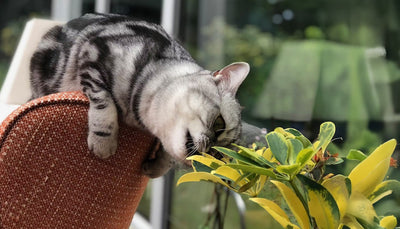
It’s beginning to look a lot like Christmas! Without a needle on the floor, our Christmas collection is here to bring instant, easy and unbelievably beautiful colour this festive season.

As autumn transitions into winter, there's no need to say goodbye to flowers in your home. Each month is associated with its own distinctive birth flower, rich in symbolism and tradition.
If you're born in November, you're fortunate to have two stunning birth flowers: the chrysanthemum and the peony. Let’s explore the meanings behind these flowers, their cultural significance, and why choosing artificial versions might be the ideal way to enjoy their beauty all year long.

November is fortunate to have two birth month flowers: the rich and vibrant chrysanthemum and the pretty peony!
These flowers aren’t just stunning to look at; they're steeped in history and symbolism, making them meaningful choices for those celebrating a November birthday.

The tradition of assigning birth flowers to each month dates back to ancient times, with different cultures attributing various meanings to specific flowers.
Having two birth flowers in a single month isn't uncommon and usually stems from the availability of flowers in different regions or the blending of traditions.
In November’s case, chrysanthemums have a strong presence in both Eastern and Western cultures, while peonies, often associated with spring and summer, symbolise richness and honour in many societies. Together, they offer a diverse representation of beauty and strength.

Chrysanthemums, sometimes referred to as “mums,” have a deep-rooted history, especially in Asia.
They are celebrated in Japan during the Festival of Happiness and are revered as a symbol of the sun, longevity, and rejuvenation.
In Europe and the United States, chrysanthemums often symbolise cheerfulness and are commonly seen in autumnal arrangements.
In Australia, chrysanthemums are the most popular flower for Mother's Day, celebrated in May, partly because their name ends in "mum," helping to symbolise love and motherhood.
Peonies, on the other hand, are symbols of prosperity, romance, and honour. In Chinese culture, they are often called the “king of flowers” and are associated with royalty and wealth.
Though they bloom in the late spring and early summer, their enduring popularity and rich symbolism have earned them a place as one of November’s birth flowers.

Chrysanthemums carry a variety of meanings depending on their colour. Generally, they symbolise optimism, joy, and a life well-lived.
In some cultures, particularly in Europe, they are also associated with sympathy and are often used in remembrance. However, in Eastern traditions, they are primarily seen as positive symbols of happiness, vitality, and peace.

Peonies are often associated with romance, elegance, and wealth. Their large, lush blooms represent abundance and are frequently used in weddings and other celebrations of love.
The peony’s ability to return year after year is also seen as a symbol of renewal and continuity, making it a perfect flower for those looking to embrace the beauty of life’s cycles.

While fresh flowers are undeniably beautiful, they’re also fleeting.
If you want to enjoy the symbolism and beauty of November’s birth flowers all year long, why not consider high-quality faux flowers instead? At Blooming Artificial, we offer stunning options that capture the essence of these iconic blooms without the need for constant care.
Chrysanthemum alternative: Explore our artificial geraniums, which offer vibrant colour and a long-lasting alternative to chrysanthemums.
Peony alternatives: Our artificial peony stem and the sensational artificial bouquet offer the lush, romantic look of real peonies in arrangements that will never wilt or fade.
For more options, visit our collections of artificial flowers and single stems to find the perfect pieces for your home or as gifts.
For more insights into birth flowers and their artificial alternatives, explore our blog and learn about the meaning and psychology of flower colours, or get in touch to speak to one of our team.